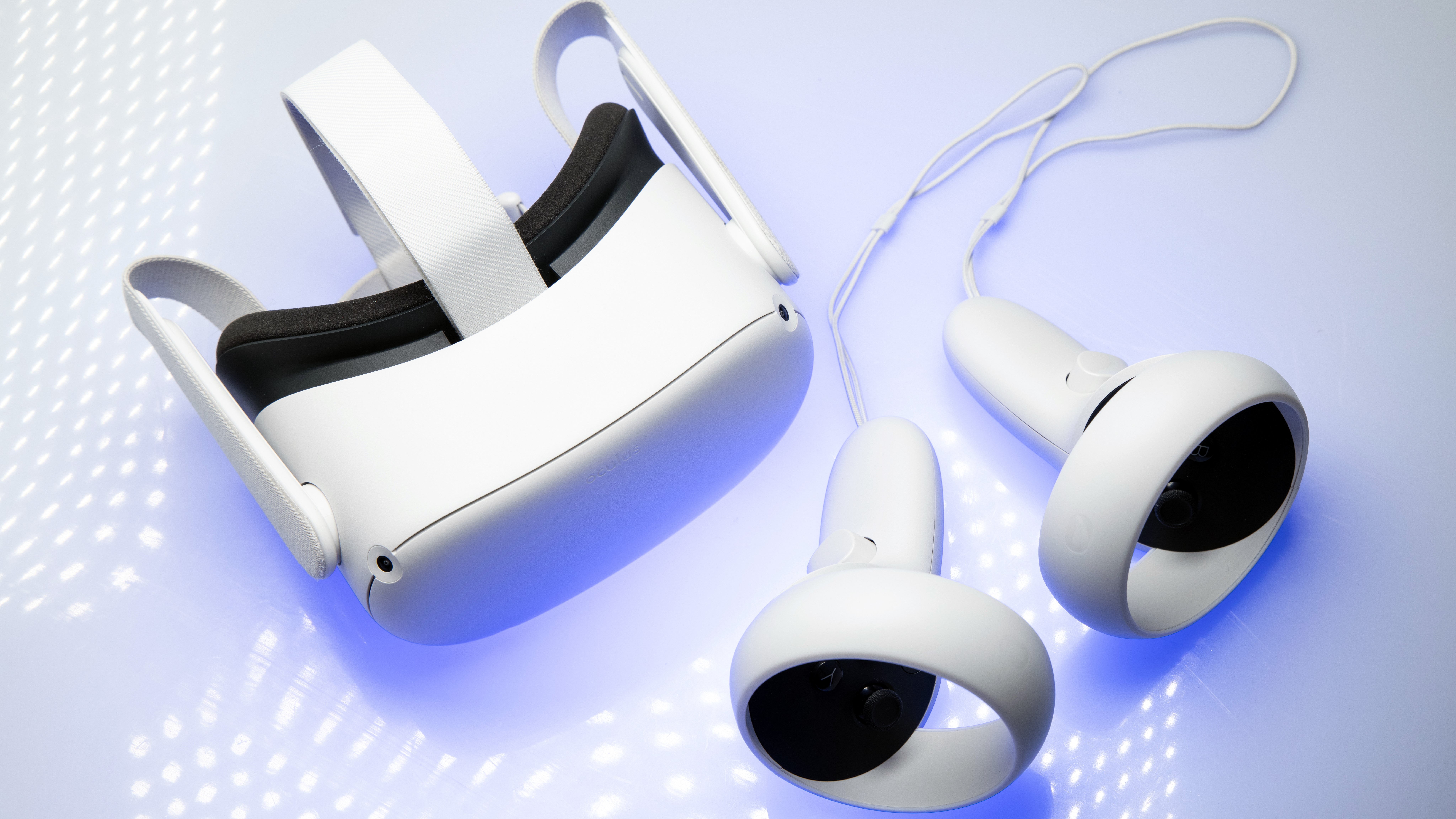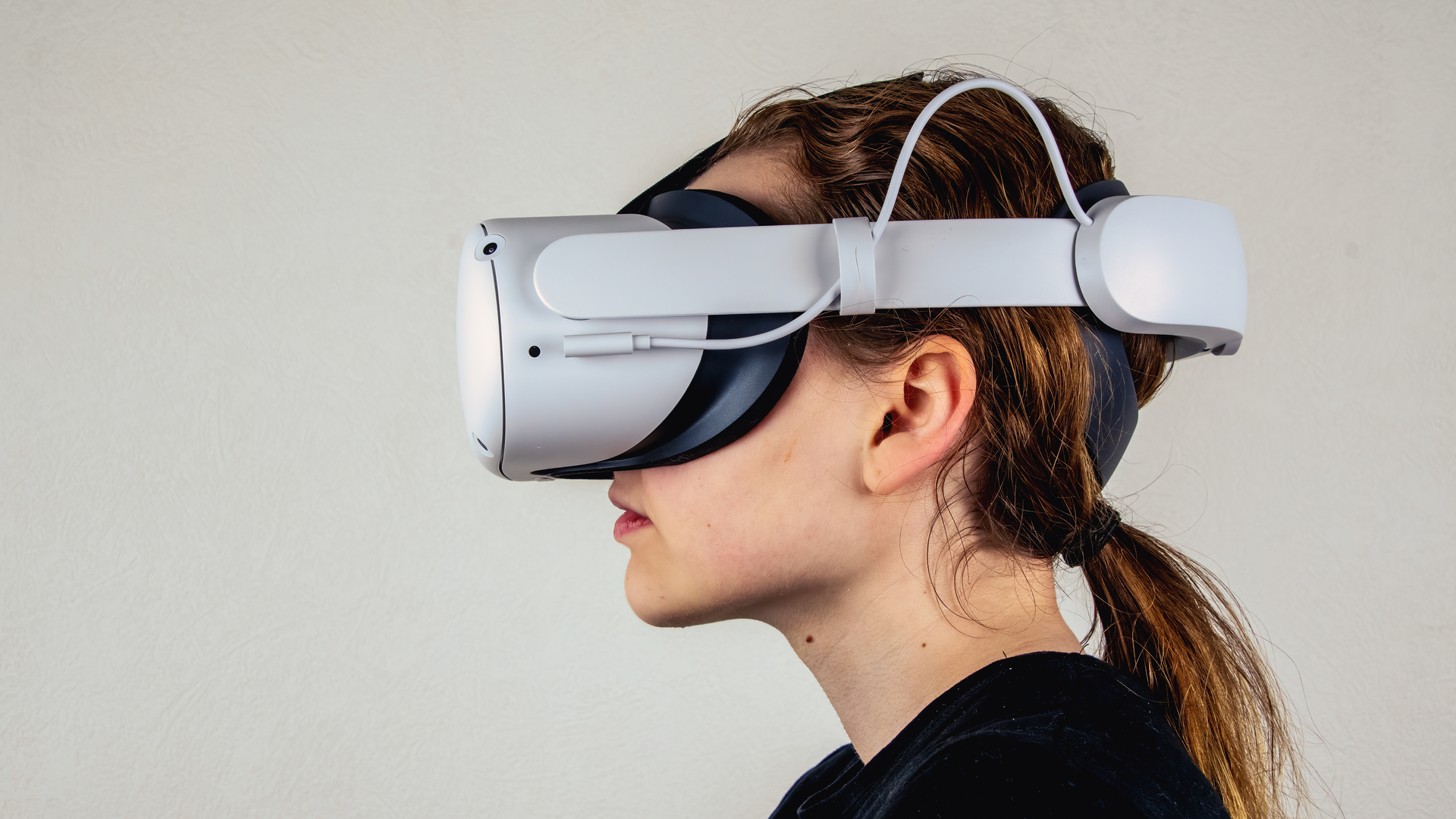Immersion be damned, I’m never using this Oculus Quest 2 mouth haptic
This is one VR accessory I know I'll never buy

Haptic accessories for the Meta Quest 2 have gone too far, as developers have created a device that can simulate real-world sensations on your lips, teeth, and tongue.
Haptics are nothing new to the world of VR or gaming in general. The Nintendo Switch’s Joy-Cons, the PS5 DualSense and Quest 2’s controllers all use motors to simulate real-world actions. There are even reports that similar motors will be built into the PSVR 2 headset itself.
But the more immersive nature of VR has encouraged developers to take things a step further. We’ve previously talked about a haptic vest that could simulate the sensation of being hugged – or stabbed in the back – and now researchers have brought haptics to our mouths (via IFLScience).
The video demonstration above starts off normal enough, and I’ll be honest the narrator almost started to convince me that mouth haptics were the VR gadget I was missing.
According to them, the mouth is second only to the fingertips in terms of tactile sensitivity, making it a prime target for haptic feedback. But most other mouth haptic devices require you to wear a bulky accessory and worst of all you probably have to insert some mechanical part of it into your mouth. None of that sounds appealing.
FIG’s design is different though, its haptic device is an array of transducers that are placed on the bottom side of the Quest 2’s visor. These can then fire concentrated acoustic vibrations towards your mouth to give off various sensations on your lips, teeth, and tongue.
Still weird, but certainly a lot better sounding than previous alternatives. But then everything changed when the spiders attacked.
Get daily insight, inspiration and deals in your inbox
Sign up for breaking news, reviews, opinion, top tech deals, and more.
The first demonstration shows a user moving through a spider-filled domain. The haptics provides the sensation of webs wiping past their moth, spiders crawling on their face, and goo splashing them.
It sounds entirely unappealing and even just watching it sent my arachnophobia into overdrive.
Even though the video then went on to show how the same device could be used to simulate more enjoyable sensations (like drinking coffee) I was already convinced; I'm never putting this device on my Quest 2.

Normally I'd reserve judgment until I have a chance to try something like this out for myself, as I may be proven wrong. But in this instance, I won't and I'm not.
I don't care how much immersion this haptic accessory can add. If one of its features can make it feel like a creepy, eight-legged monster is trying to pry apart my lips and crawl inside my mouth then I'm good without it, thanks.
Fortunately, this prototype is still in the testing phases, and we're likely a long way from seeing mainstream VR games put it to use. But the researcher's success could mean we'll one day see VR headsets built with mouth haptics like this installed.
When that day comes, I know I'll be leaving the metaverse for good.

Hamish is a Senior Staff Writer for TechRadar and you’ll see his name appearing on articles across nearly every topic on the site from smart home deals to speaker reviews to graphics card news and everything in between. He uses his broad range of knowledge to help explain the latest gadgets and if they’re a must-buy or a fad fueled by hype. Though his specialty is writing about everything going on in the world of virtual reality and augmented reality.